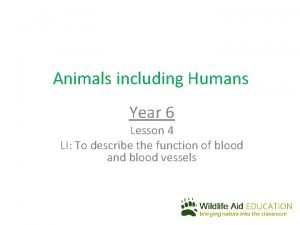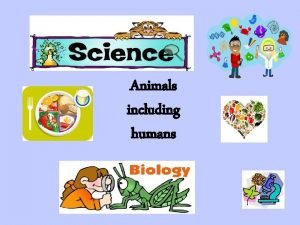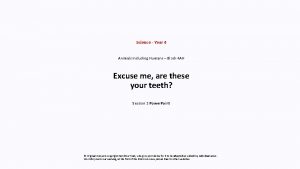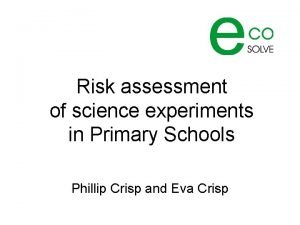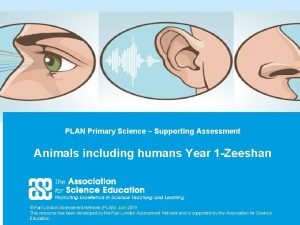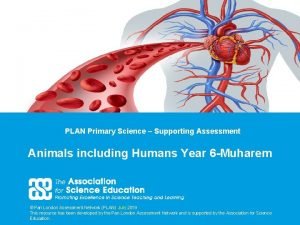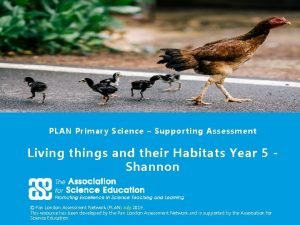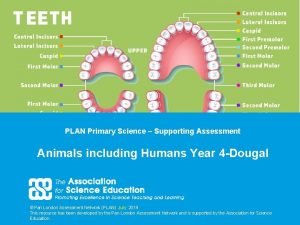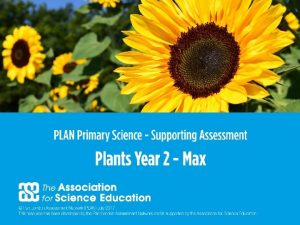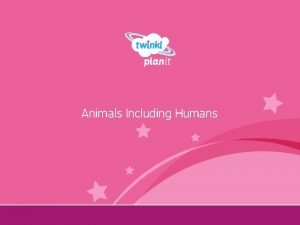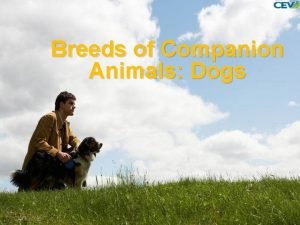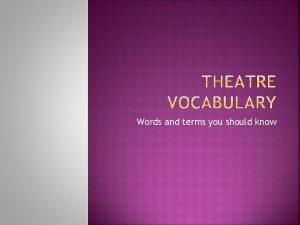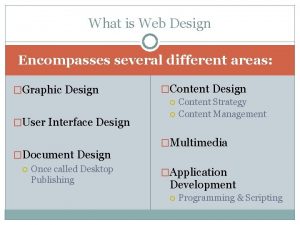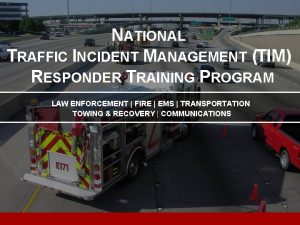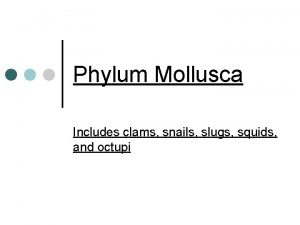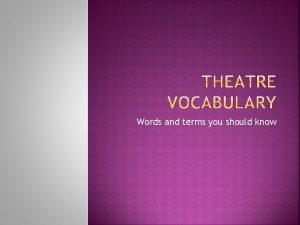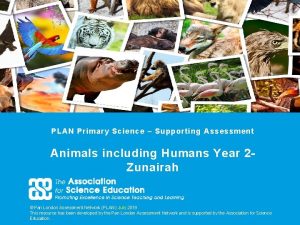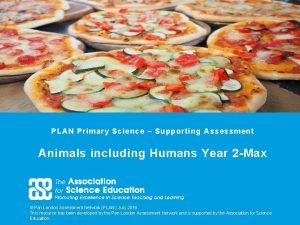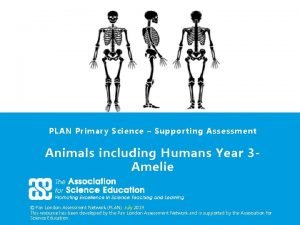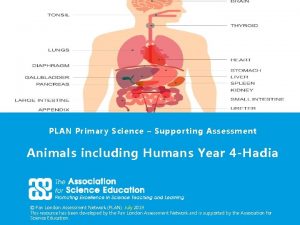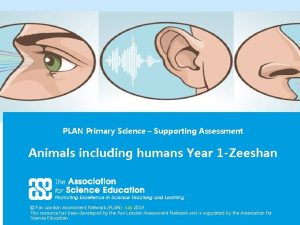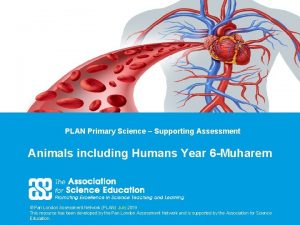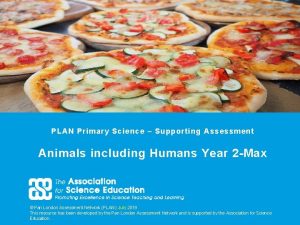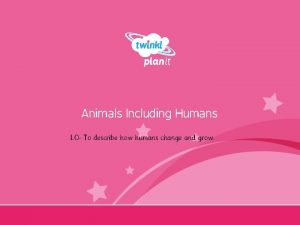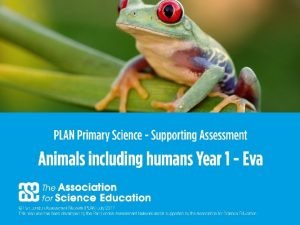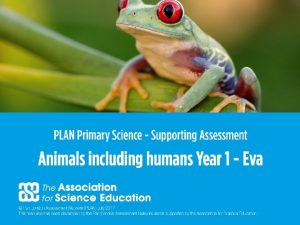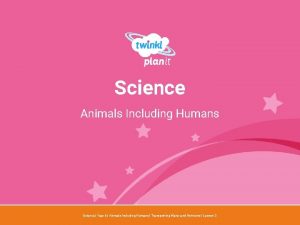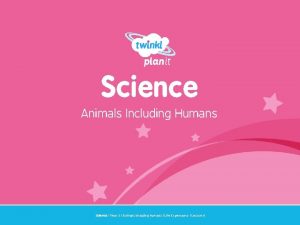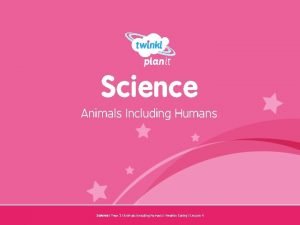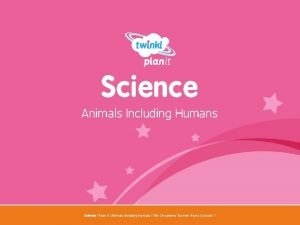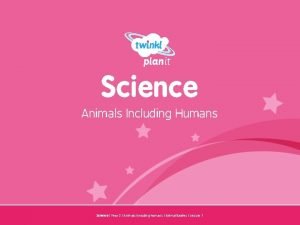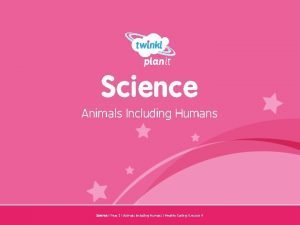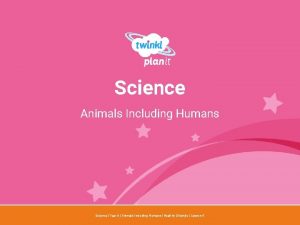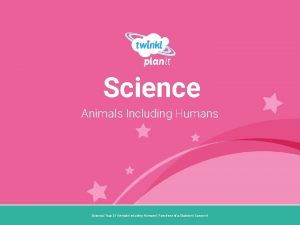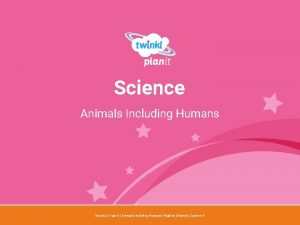PLAN Primary Science Supporting Assessment Animals including Humans


























- Slides: 26

PLAN Primary Science – Supporting Assessment Animals including Humans Year 6 -Muharem © Pan London Assessment Network (PLAN) July 2019 This resource has been developed by the Pan London Assessment Network and is supported by the Association for Science Education. 1

PLAN Primary Science - Supporting Assessment PLAN Primary Science is a set of resources produced to enable teachers to have a clearer understanding of National Curriculum expectations for meeting the standard. Annotated collections of children’s work provide examples of what working at the expected standard for primary science might look like for the knowledge and conceptual understanding statements of the programmes of study (POS). It is not the intention of these resources to specifically exemplify the working scientifically statements. However, aspects of working scientifically have been shown as an integral part of the teaching and learning of the knowledge and concepts. The resources provided have been cross moderated multiple times before publishing so that they can be used with confidence by teachers and subject leaders. Each collection of work shows one example of how a pupil has met National Curriculum statements for a particular area of content but these are not intended to be the definitive way of teaching these statements. 2

Structure of the resources Each resource contains the relevant National Curriculum statements for the unit of work and prior learning, a planning matrix, annotated work and a summary sheet. The matrix provides an interpretation of the key learning of the National Curriculum statements, and suggestions of key vocabulary. In order to be meet the expectations pupils must firstly understand the key concept and then be provided with opportunities to apply that knowledge. This is a key planning tool. Key Learning Secure Possible Evidence Show Overview paragraph describing understanding of a curriculum concept by using scientific Key vocabulary – list of words vocabulary correctly Possible ways to demonstrate key learning, particularly correct usage of vocabulary Apply knowledge Suggestions of contexts to use. in familiar related contexts, including a range of enquiries Possible ways to demonstrate that a pupil has gone beyond recall of facts and can apply the key learning, for example using the vocabulary and basic principles to produce explanations, usually within Working Scientifically contexts. 3

Contents of the materials Please note: The NC statements for each topic area for the relevant year group are stated on the slide. Only the statements in bold on that slide have been exemplified. In these cases the teachers have chosen to split the statements within the topic area to teach at different times. The prior NC statements relevant to the topic area are also stated and use to determine pupils’ knowledge at the start of the unit. Each slide has been annotated with coloured text. Please see key below: Red Commentary to explain how evidence meets/does not meet NC statements Blue Commentary to highlight features of working scientifically Green Pupil Speak Grey Other relevant information eg. vocabulary used 4

2 Statement ––Prior learning Year 2 statement prior learning Pupils should be taught to: • describe the importance for humans of exercise, eating the right amounts of different types of food, and hygiene. (2 -Animals, including Humans)

3 Statement ––Prior learning Year 3 statement prior learning Pupils should be taught to: • identify that animals, including humans, need the right types and amount of nutrition, and that they cannot make their own food; they get nutrition from what they eat (3 -Animals, including Humans)

Year 4 Statement – Prior learning 4 statement Pupils should be taught to: • describe the simple functions of the basic parts of the digestive system in humans (4 -Animals, including Humans) • identify the different types of teeth in humans and their simple functions (4 -Animals, including Humans)

Year 66 statements Statements Year Pupils should be taught to: • identify and name the main parts of the human circulatory system, and describe the functions of the heart, blood vessels and blood (6 -Animals, including Humans) • recognise the impact of diet, exercise, drugs and lifestyle on the way their bodies function (6 -Animals, including Humans) • describe the ways in which nutrients and water are transported within animals, including humans (6 -Animals, including Humans)

Later Statements Pupils do not need to be taught content they will learn in later year groups. They can be challenged by applying the content for their year group in broader contexts. In Key Stage 3 pupils will be taught about: • the consequences of imbalances in the diet, including obesity, starvation and deficiency diseases • the effects of recreational drugs (including substance misuse) on behaviour, health and life processes. • the structure and functions of the gas exchange system in humans, including adaptations to function • the mechanism of breathing to move air in and out of the lungs …. • the impact of exercise, asthma and smoking on the human gas exchange system.

Key learning Possible Evidence Shows understanding of a concept using scientific vocabulary correctly The heart pumps blood in the blood vessels around to the lungs. Oxygen goes into the blood and carbon dioxide is removed. The blood goes back to the heart and is then pumped around the body. Nutrients, water and oxygen are transported in the blood to the muscles and other parts of the body where they are needed. As they are used they produce carbon dioxide and other waste products. Carbon dioxide is carried by the blood back to the heart and then the cycle starts again as it is transported back to the lungs to be removed from the body. This is the human circulatory system. Diet, exercise, drugs and lifestyle have an impact on the way our bodies function. They can affect how well out heart and lungs work, how likely we are to suffer from conditions such as diabetes, how clearly we think, and generally how fit and well we feel. Some conditions are caused by deficiencies in our diet e. g. lack of vitamins. Key vocabulary Heart, pulse, rate, pumps, blood vessels, transported, lungs, oxygen, carbon dioxide, nutrients, water, muscles, cycle, circulatory system, diet, exercise, drugs and lifestyle Can draw a diagram of the circulatory system and label the parts and annotate it to show what the parts do Produces a piece of writing that demonstrates the key knowledge e. g. explanation text, job description of the heart Applying knowledge in familiar related contexts, including a range of enquiries Create a role play model for the circulatory system Carry out a range of pulse rate investigations Fair test – effect of different activities on my pulse rate Pattern seeking – exploring which groups of people may have higher or lower resting pulse rates Observation over time - how long does it take my pulse rate to return to my resting pulse rate (recovery rate) Pattern seeking – exploring recovery rate for different groups of people Learn about the impact of exercise, diet, drugs and lifestyle on the body. This is likely to be taught through direct instruction due to its sensitive nature Use the role play model to explain the main parts of the circulatory system and their role Can use subject knowledge about the heart whilst writing conclusions for investigations Can explain both the positive and negative effects of diet, exercise, drugs and lifestyle on the body Present information e. g. in a health leaflet describing impact of drugs and lifestyle on the body SECURE Assessment guidance

Initial assessment activity – to check on current understanding of the circulatory system • identify and name the main parts of the human circulatory system, and describe the functions of the heart, blood vessels and blood The children were given prompt questions to help them think about what they already knew about the circulatory system. This initial activity shows that Muharem already has some knowledge about the parts of the circulatory system and the role of the blood. 11

Initial assessment activity – to check on current understanding of the circulatory system • identify and name the main parts of the human circulatory system, and describe the functions of the heart, blood vessels and blood • describe the ways in which nutrients and water are transported within animals, including humans This shows that Muharem has clearly read about blood in the past and has in depth knowledge on this particular aspect. This is beyond the requirement for KS 2. What this initial assessment activity shows is that he is not secure with the function of the circulatory system in terms of transporting water around the body. Neither does he show an awareness of the double circulatory system. 12

Working Scientifically and recording data about pulse rates • recognise the impact of diet, exercise, drugs and lifestyle on the way their bodies function The children were shown how to measure their pulse rates and they recorded this information for the whole class. They were then asked to think about why the pulse rates were different. Whilst discussing this with his group Muharem suggested that some people may have counted wrongly. He also suggested that maybe people who play sport more have different pulse rates. Or maybe there is a difference between boys and girls. The response to the marking shows that he is able to interpret his gathered data. Part of Muharem’s recording of the class’s pulse rates 13

Working Scientifically and recording data about pulse rates • recognise the impact of diet, exercise, drugs and lifestyle on the way their bodies function To make it easier to look for a pattern between the pulse rates of boys and girls Muharem presented the data as two bar charts. Muharem was able to draw axes, select a suitable scale, label the axes and plot the bars correctly. ‘The bars on the right look higher but three of them are very high and may have been counted wrongly. If you ignore those there is not much difference between the two graphs. ’ He has been able to pick out the anomalies and look for a pattern (or lack of one) in the results). 14

Writing about the human circulatory system • identify and name the main parts of the human circulatory system, and describe the functions of the heart, blood vessels and blood • describe the ways in which nutrients and water are transported within animals, including humans After carrying out some independent research the children wrote reports about the circulatory system. This writing shows that Muharem is secure in naming the basic parts and can describe their functions. He also understands that nutrients and oxygen are transported around the body in the blood. He is not showing an understanding of the double circulatory system. Key vocabulary – heart, pumps, blood, nutrients This subject knowledge is beyond KS 2. This shows that he knows that oxygen and nutrient are transported in the blood. The use of the word energy is beyond KS 2. This does not show a clear understanding of the double circulatory system. 15

Additional research about the human circulatory system • identify and name the main parts of the human circulatory system, and describe the functions of the heart, blood vessels and blood This is some additional research that Muharem carried out at home. Knowledge about the chambers of the heart and the names of the different vessels is beyond KS 2. Although there is a lot of vocabulary in this work, it is not clear from this whether Muharem understands that the oxygenated blood is pumped around the body and the deoxygenated blood is pumped to the lungs. 16

Role playing the human circulatory system • identify and name the main parts of the human circulatory system, and describe the functions of the heart, blood vessels and blood • describe the ways in which nutrients and water are transported within animals, including humans The basic parts of the circulatory system were mapped out onto the floor in the hall – heart, lungs, blood vessel and muscles. The children moved around the body as though they were the blood. When the teacher said freeze the children stopped moving and explained to the person in front of them where they were in the circulatory system. Muharem demonstrated moving through the complete system explaining where he was and what he was doing. ‘I am in the left ventricle at the moment. I am going to be pumped into the aorta and then I will take the water, nutrients and oxygen to the muscles in the body. ’ By the end of this activity it was clear to the teacher that Muharem has a good understanding of the double circulatory system required to be secure at KS 2. The additional detail about the parts of the heart and the names of the different vessels is beyond KS 2. 17

Writing about the human circulatory system in the form of a non chronological report • identify and name the main parts of the human circulatory system, and describe the functions of the heart, blood vessels and blood • describe the ways in which nutrients and water are transported within animals, including humans After the role play the children were asked to write their now fuller understanding of the circulatory system. This is further evidence that Muharem is secure in the understanding that the blood transports nutrients, oxygen and water around the body 18

Writing about the human circulatory system in the form of a non chronological report contd. • identify and name the main parts of the human circulatory system, and describe the functions of the heart, blood vessels and blood • describe the ways in which nutrients and water are transported within animals, including humans This portion of writing shows that Muharem has a clear understanding of oxygenated and deoxygenated blood and the flow of blood from the heart to the lungs. He has added additional detail beyond KS 2 about the chambers of he heart and the function of the valves. 19

Writing about the human circulatory system in the form of a non chronological report contd. • identify and name the main parts of the human circulatory system, and describe the functions of the heart, blood vessels and blood • describe the ways in which nutrients and water are transported within animals, including humans This portion of writing shows that Muharem has a clear understanding of the double circulatory system as he knows about the difference in the structure of the two sides of the heart. The detail is beyond KS 2. 20

Writing about the human circulatory system in the form of a non chronological report contd. • identify and name the main parts of the human circulatory system, and describe the functions of the heart, blood vessels and blood • describe the ways in which nutrients and water are transported within animals, including humans This portion of writing shows that Muharem has a clear understanding of what is transported in the body including waste products such as carbon dioxide. Muharem is an EAL learner and when asked later why he used the word normally, he explained that he was giving an example. The teacher suggested the phrase ‘ such as’ would be more appropriate. Again he has added additional detail beyond KS 2 about the different blood vessels. 21

Writing about the human circulatory system in the form of a non chronological report contd. • identify and name the main parts of the human circulatory system, and describe the functions of the heart, blood vessels and blood • describe the ways in which nutrients and water are transported within animals, including humans This part of the writing summarises the double circulatory system in the way expected for a child secure at Key Stage 2. 22

Observing heart rate over time • recognise the impact of diet, exercise, drugs and lifestyle on the way their bodies function The children were asked to plan and carry out an investigation to observe their pulse rate after exercising. Muharem chose to try two different types of exercise and measured his pulse rate every 30 seconds. He chose to plot his data as a line graph. This conclusion is further evidence that his subject knowledge about the circulatory system is secure as he is able to relate this to his observations during the enquiry – the blood transporting oxygen and water to where it is required. It also shows that he can describe the impact of exercise on his body. 23

Poster giving information about how to keep the heart healthy • recognise the impact of diet, exercise, drugs and lifestyle on the way their bodies function The teacher asked the children in groups to discuss their ideas about how to keep their bodies healthy and what can damage their bodies. Muharem was able to give a number of examples of ways to stay healthy and some things that can damage your body. The children shared their ideas with the whole class and were then asked to produce poster to share this understanding more widely. This poster shows that Muharem is secure about the impact of exercise and diet on the body. He does not include the impact of lifestyle or drugs but he talked about these things during the group discussion. 24

Summary Overall summary – secure Muharem started with some prior knowledge of the circulatory system – the basic parts. He was not aware of the function of the circulatory system as a transport system or the double circulation. Talk during lessons and his written work show a continually increasing ability to explain the double circulatory system and the range of substances transported by the blood. His final discussion and poster show a secure understanding of the impact of diet, exercise, drugs and lifestyle on the way the body functions. 25

Acknowledgements All materials were created in the school 26
 Animals including humans year 6
Animals including humans year 6 Animal that only eats plants
Animal that only eats plants Animals including humans year 4
Animals including humans year 4 Science risk assessment primary school
Science risk assessment primary school Plan primary science
Plan primary science Plan primary science
Plan primary science Plan primary science
Plan primary science Digestive parts
Digestive parts Plan primary science
Plan primary science What's your favourite subject
What's your favourite subject Https://a-z-animals.com/animals/
Https://a-z-animals.com/animals/ Are bears producers or consumers
Are bears producers or consumers Parasitic food chain
Parasitic food chain Animals that eat both plants and animals
Animals that eat both plants and animals Fixation omission emphasis
Fixation omission emphasis Primary and supporting instruments ifr
Primary and supporting instruments ifr Producers primary consumers secondary consumers
Producers primary consumers secondary consumers In a food web what do the arrows represent
In a food web what do the arrows represent Breeds of companion animals dogs
Breeds of companion animals dogs Magenta cyan and yellow are the ____ color. *
Magenta cyan and yellow are the ____ color. * Printed words including dialogue
Printed words including dialogue It encompasses several different aspects, including
It encompasses several different aspects, including Ice introduce cite explain
Ice introduce cite explain The mutcd states all workers
The mutcd states all workers Invertebrates including snails slugs and mussels
Invertebrates including snails slugs and mussels George and tamara doesn't want to see that movie
George and tamara doesn't want to see that movie Billy wigglestick
Billy wigglestick
